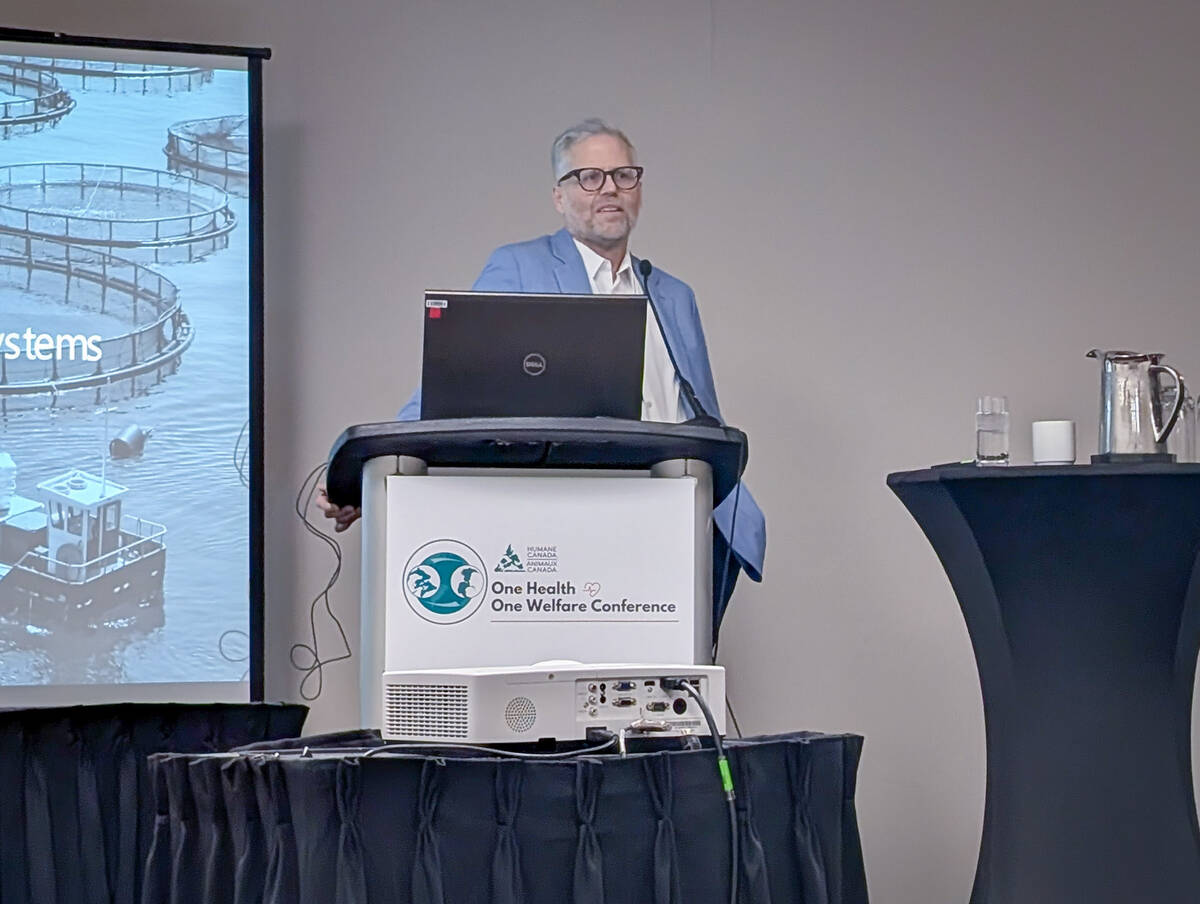While it has the same total phosphorus (P) as liquid manure from hog barns, the P available from solid cattle manure is less likely to be lost to runoff or leaching, a new University of Manitoba study finds.
The study, conducted by soil scientist Don Flaten, was sponsored in part by the Manitoba Livestock Manure Management Initiative, which released the results Tuesday. It was conducted to gauge how different sources or types of manure P affect the risk of P loss after it interacts with Prairie soils.
Read Also

Bring focused approach to target systems, not producers says animal activist
Darren Vanstone explains the process of reframing animal agriculture through advocacy and activism at the Human Canada One Health One Welfare Conference.
Flaten’s study set out to measure and compare P losses from soils treated with four sources of liquid swine manure and four sources of solid cattle manure, and to relate P runoff and leaching losses to manure P forms and soil
test phosphorus measurements.
The study found average amounts of total P — not to be confused with P that can be easily extracted for use by crops — were greater in liquid swine manure than in solid cattle manure, on a dry weight basis. But on a fresh weight basis (as applied), solid cattle manure and liquid swine manure had similar total P contents.
Thus, to apply the same rate of total P, similar rates of manure need to be applied with both liquid swine and solid cattle manure, the study said.
But the proportion of easily extractable P was greater in liquid swine manure than in solid cattle manure — so when manures are applied at the same rate of total P per acre, liquid swine manure makes a higher rate of P easily available to plants.
Also, while the P from liquid swine manure may be more agronomically available than P from solid cattle manure, gauging the agronomic availability of P to crops wasn’t part of the study.
Runoff
When nutrients were broadcast and incorporated, Flaten found the runoff concentrations and total losses of soluble reactive P were greatest from synthetic fertilizer, followed by liquid swine manure and solid cattle manure (that is, following the same pattern as for the rate of easily extractable P applied).
But Flaten cautioned that the lab study represents a worst-case scenario with sloped, unplanted, bare soil subjected to “unnaturally high” rates of runoff for a long time, as well as P application rates much greater than what’s typically applied on Manitoba fields.
“Fortunately, typical agronomic practices and weather conditions minimize the risk of loss of P from the most labile (that is, easily extractable) nutrient sources in real field situations,” the study reported.
“For example, average rates of synthetic fertilizer on Manitoba cropland is approximately one-10th of that used in the study; furthermore, synthetic fertilizer is usually banded below the soil surface, in the seed row, in spring, after our main runoff event (snowmelt) has passed.”
The study also points out that most liquid swine manure is injected or incorporated, an application method “well-suited” to manage the risk of
runoff P loss from swine manure.
“Although solid cattle manure is practically impossible to inject and not easy to fully bury by incorporation, this type of manure has very low P availability to runoff,” the study found.
Leaching
Loss of soluble reactive P to leaching in sandy soils followed a similar pattern, Flaten found, greater for soils treated with synthetic fertilizer and liquid swine manure than for cattle manure-treated soils.
“Therefore, to reduce the long term risk of P leaching into groundwater on these soils, long-term rates of P application should not exceed rates of phosphorus removal by crops, especially for synthetic fertilizer or liquid swine manure.”















